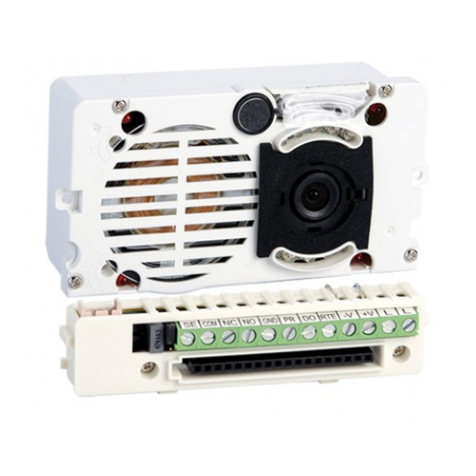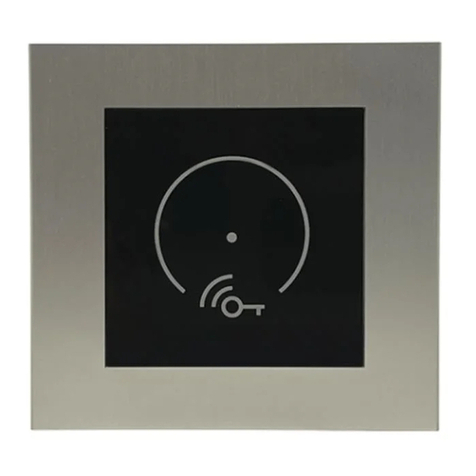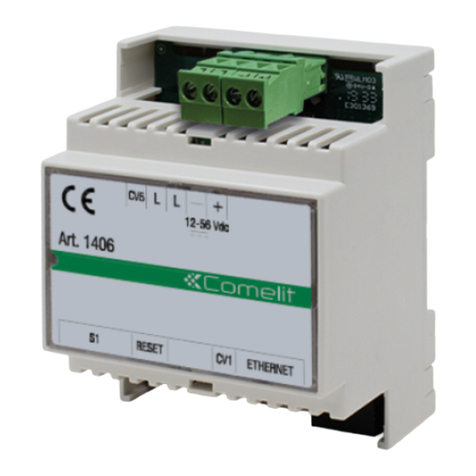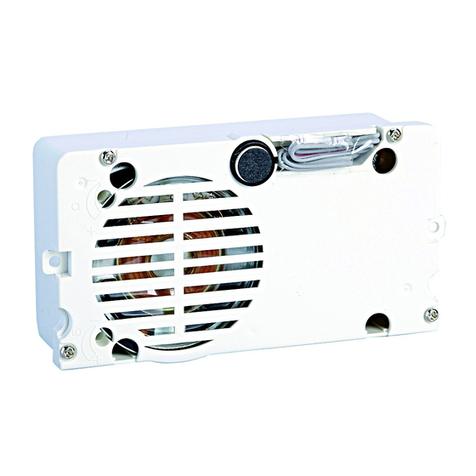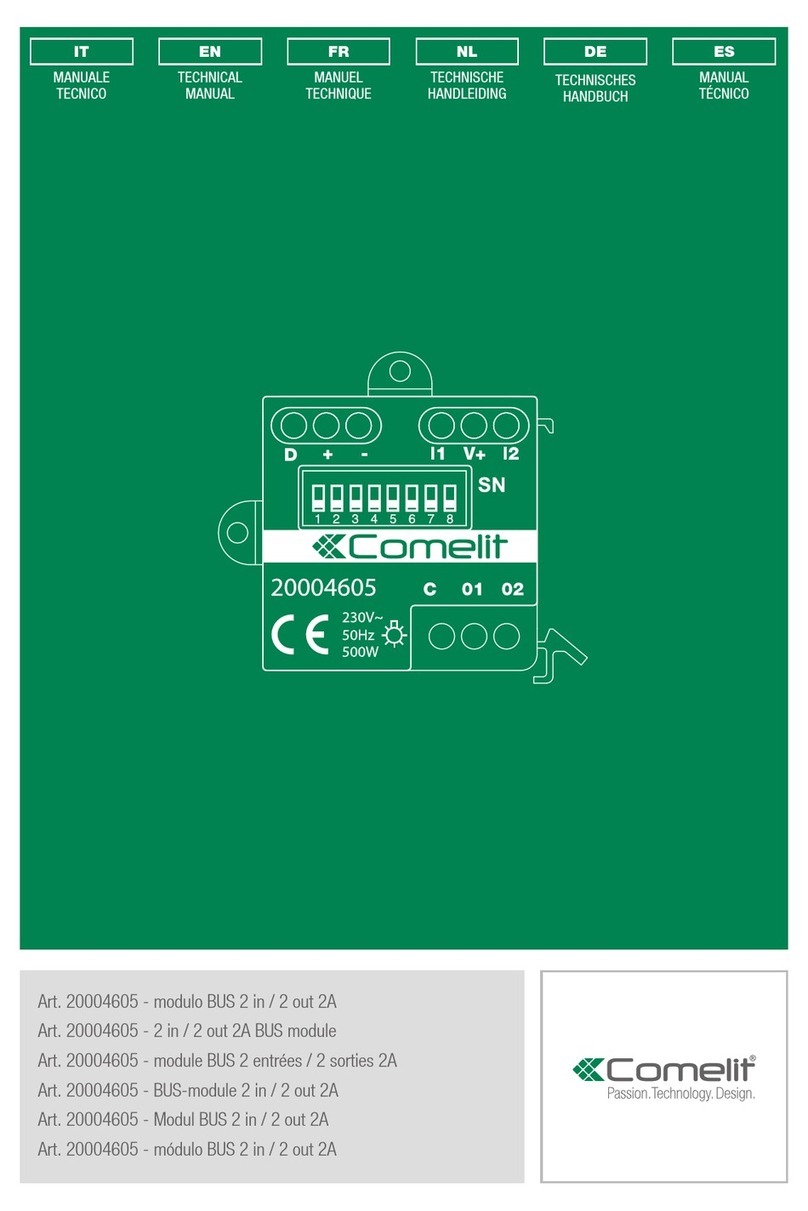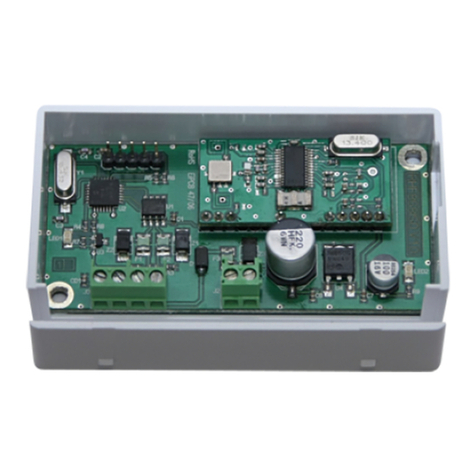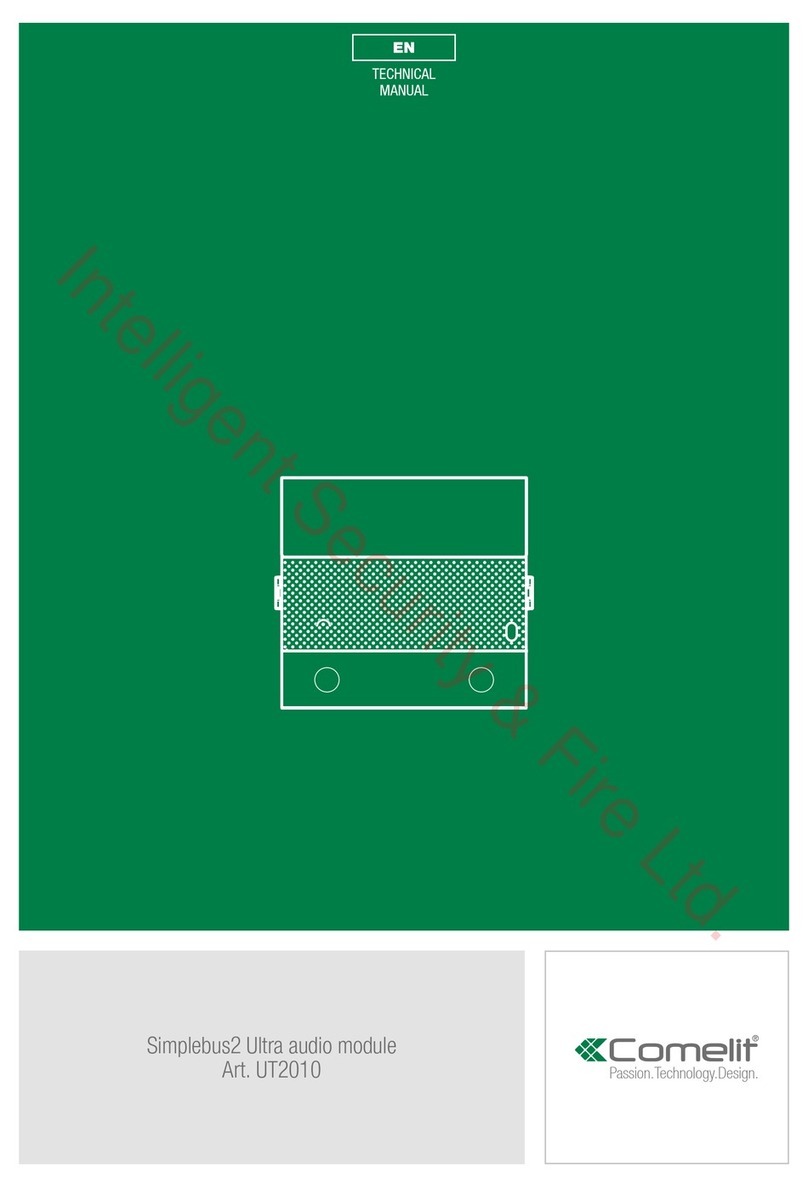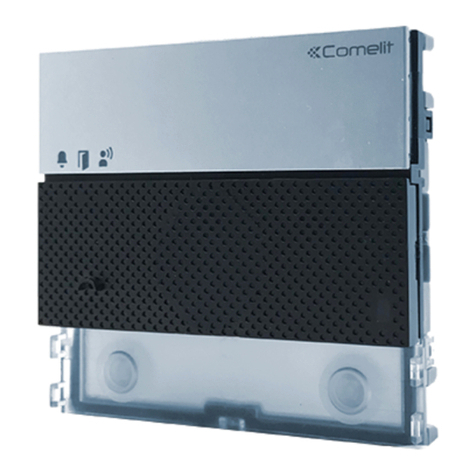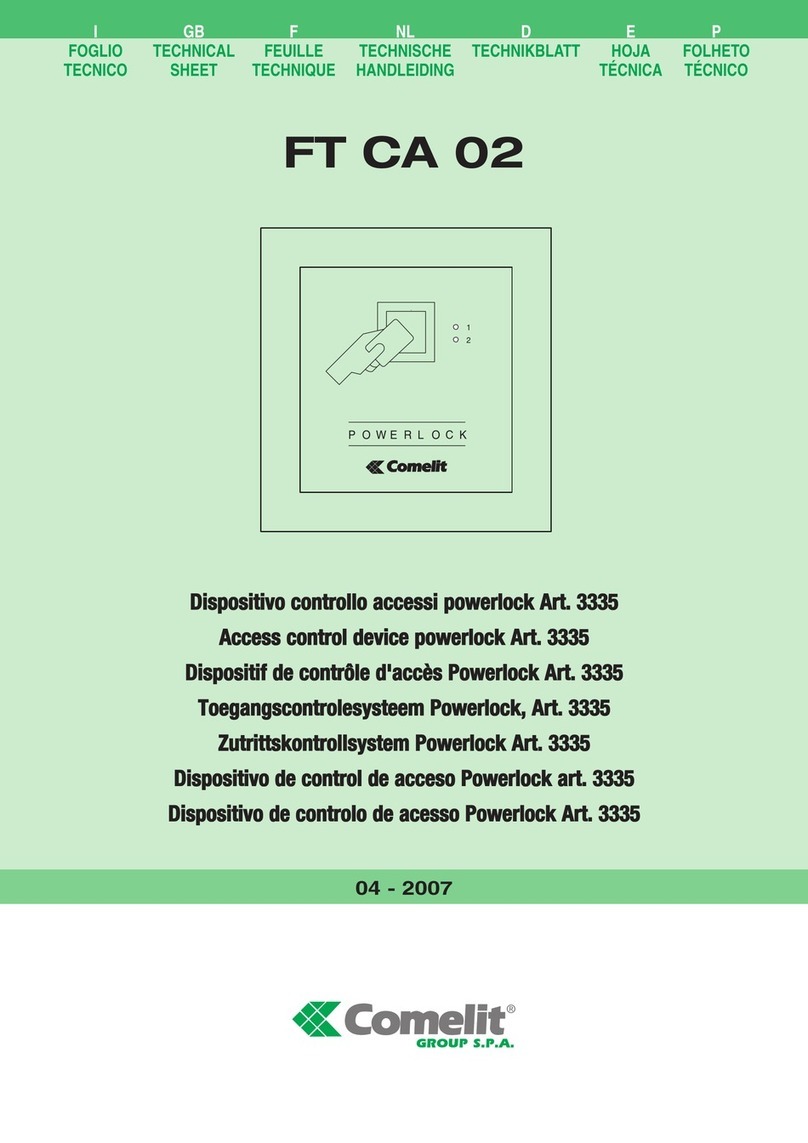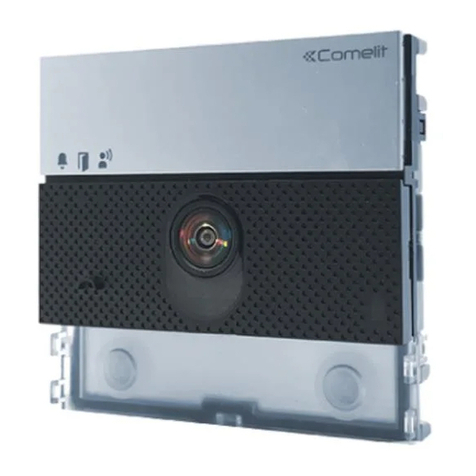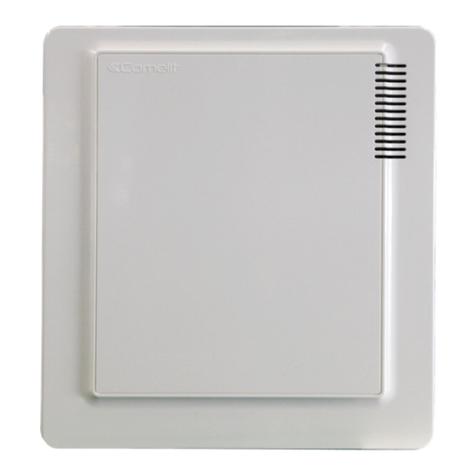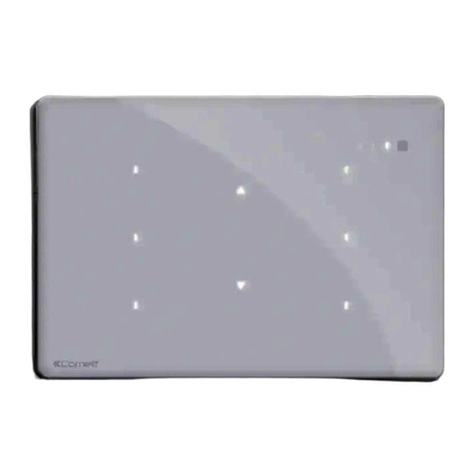EN
TECHNICAL
MANUAL
Communication expansion module Art. VEDOGSM
(protocol number greater than 004)
• This Comelit product was designed for use in the
creation of security and home automation systems
in residential, commercial or industrial settings and in
public buildings or buildings used by the public.
• All activities connected to the installation of Comelit
products must be carried out by qualified technical
personnel, with careful observation of the indications
provided in the manuals / instruction sheets supplied
with those products.
• Cut off the power supply before carrying out any
maintenance procedures.
• Use wires with a cross-section suited to the distances
involved, observing the instructions provided in the
system manual.
• We advise against running the system wires through
the same duct as the power cables (230V or higher).
• To ensure Comelit products are used safely: carefully
observe the indications provided in the manuals /
instruction sheets and make sure the system created
using Comelit products has not been tampered with
/ damaged.
• Comelit products do not require maintenance aside
from routine cleaning, which should be carried out
in accordance with the indications provided in the
manuals / instruction sheets. Any repair work must be
carried out: for the products themselves, exclusively
by Comelit Group S.p.A., for systems, by qualified
technical personnel.
• Comelit Group S.p.A. does not assume any
responsibility for: any usage other than the intended
use; non-observance of the indications and warnings
contained in this manual / instruction sheet. Comelit
Group S.p.A. nonetheless reserves the right to change
the information provided in this manual / instruction
sheet at any time and without prior notice.
WARNING
• The manufacturer, Comelit Group S.p.A.,
hereby declares that the radio equipment type
Art. VEDOGSM conforms to directive 2014/53/
EU. The full EU conformity declaration is
available at the following web address: http://
pro.comelitgroup.com/files_cms/14-manuali/
file/Declaration_VEDOGSM_EN.pdf
• Art. VEDOGSM complies with standards
EN50131-1, EN50136-1, EN50136-2,
• All the system components must have safety
grade 2 or higher to obtain grade 2 alarm
system certification according to standard
EN50131.
CERTIFICATIONS
• All articles have an ID label for product traceability.
Two examples are shown below:
PRODUCT LABELS
interpretation serial number: 000PWWYYXXXXXXXX
serial
number
article
code
protocol number
date of manufacture
week of manufacture (WW) and year of
manufacture (YY) (in the sample label
1515= week15 of the year 15)
000P1515XXXXXXXX
Via Don Arrigoni, 5 - 24020 Rovetta (BG) - Italy
VEDOGSM


